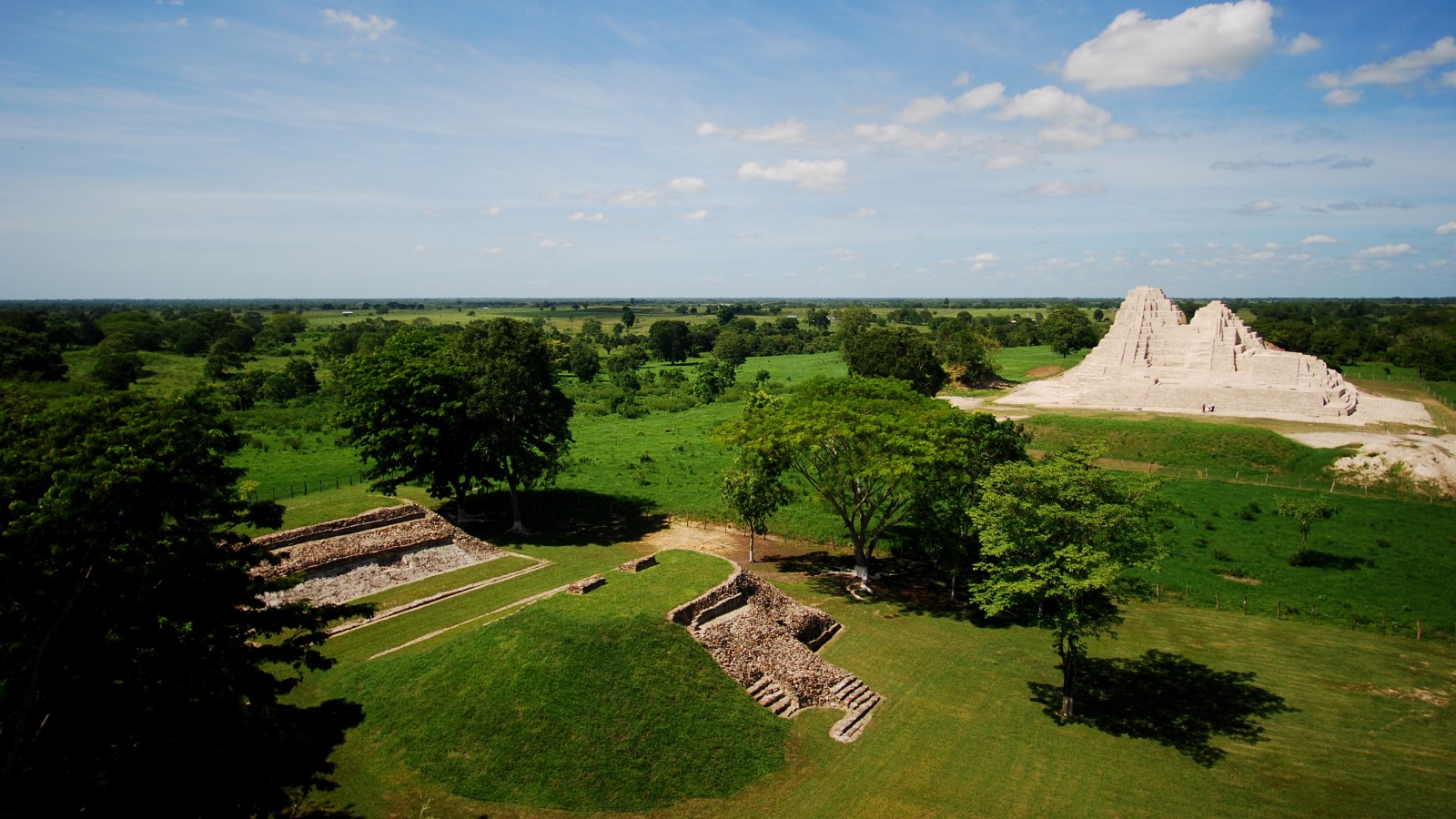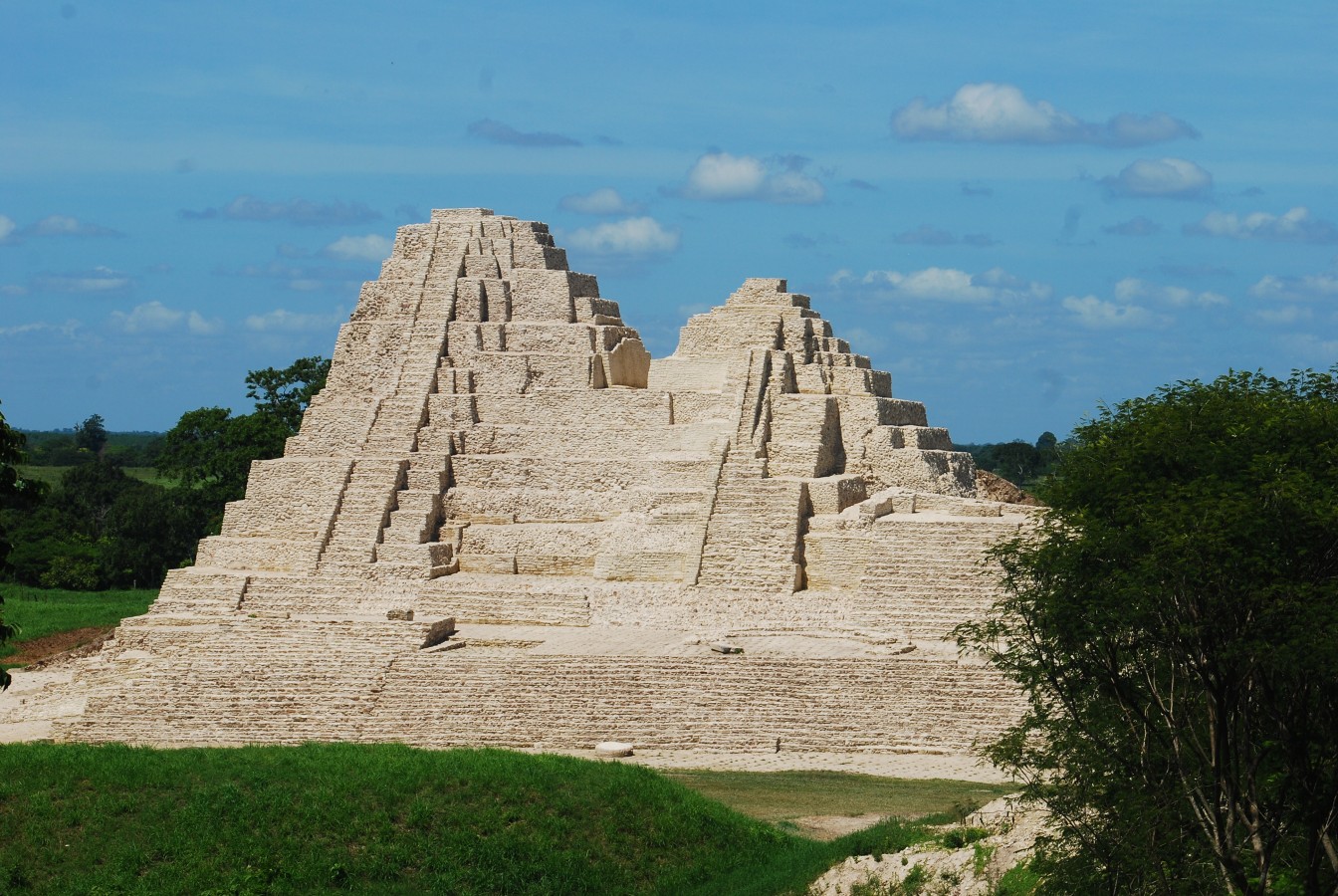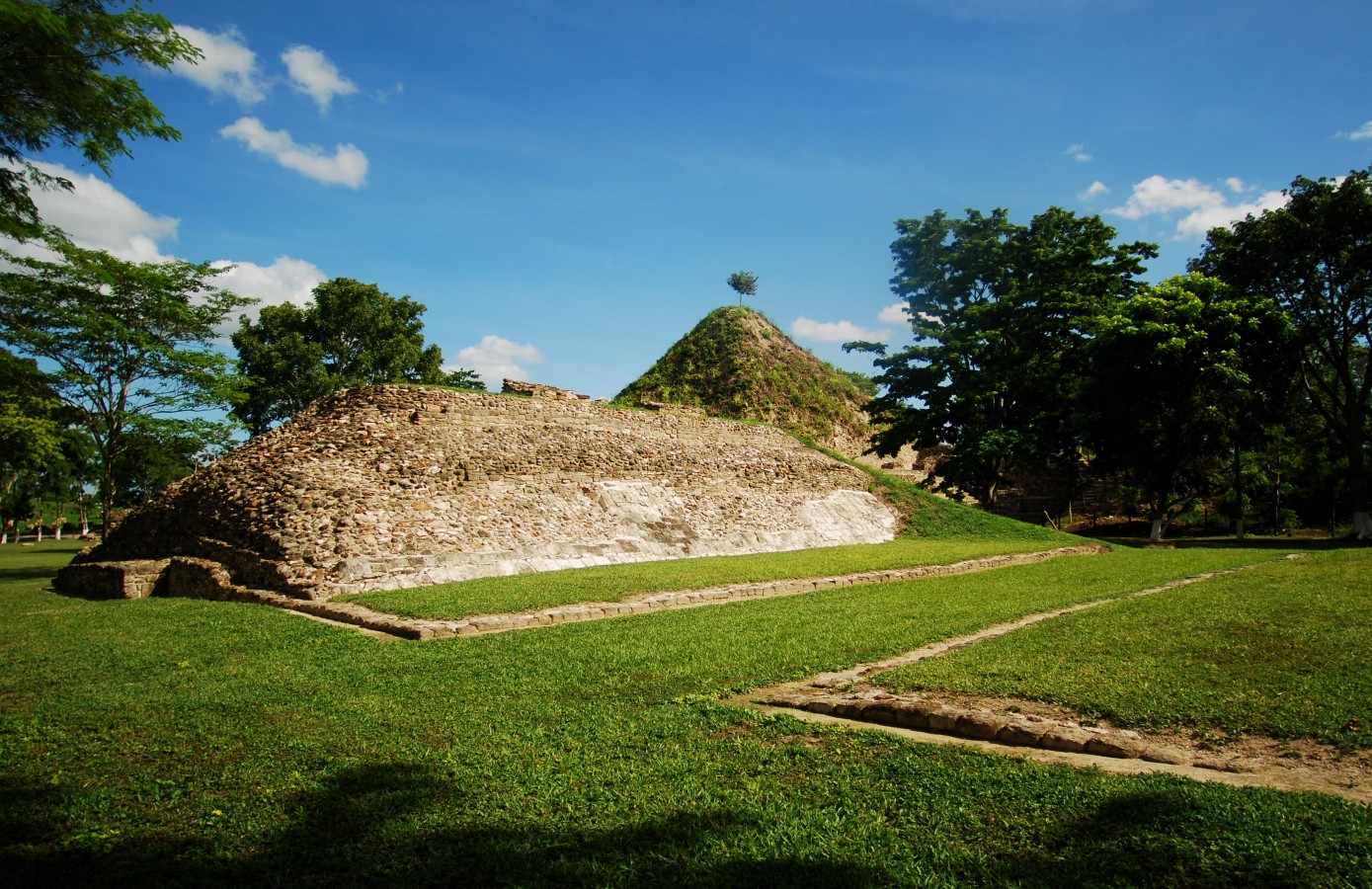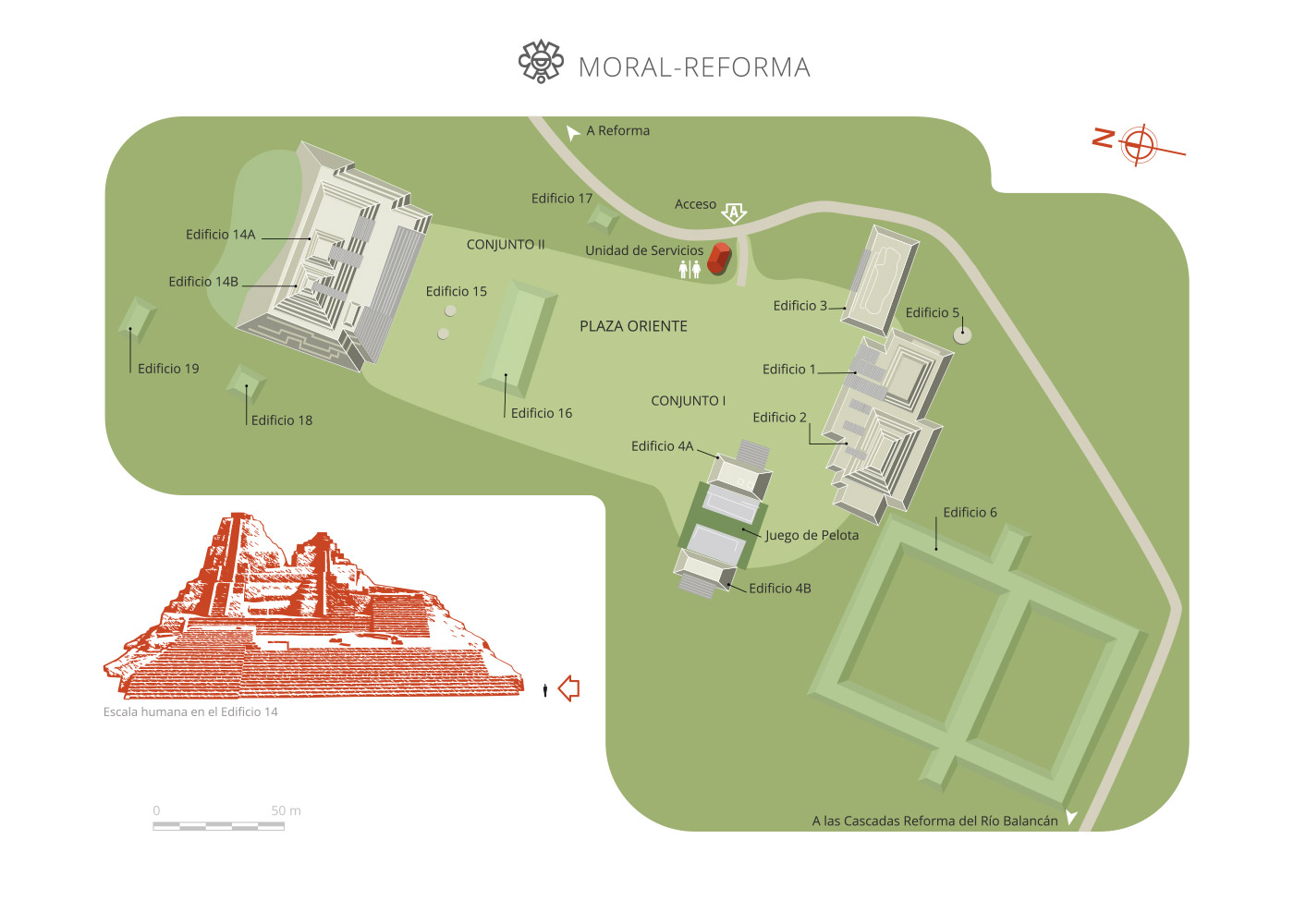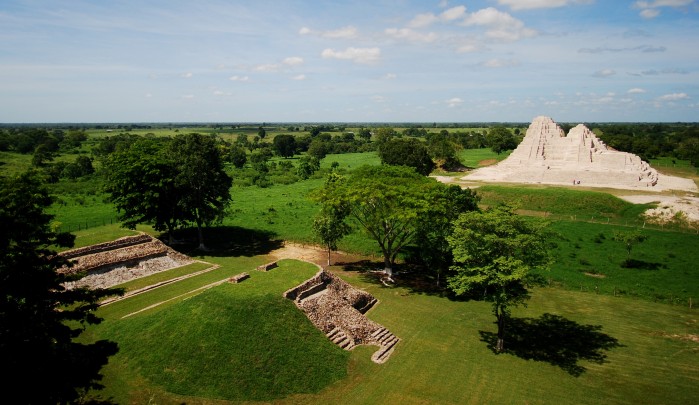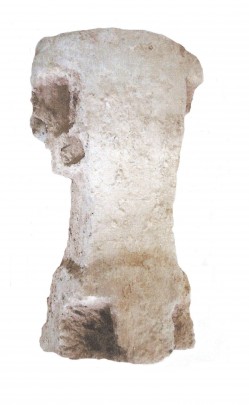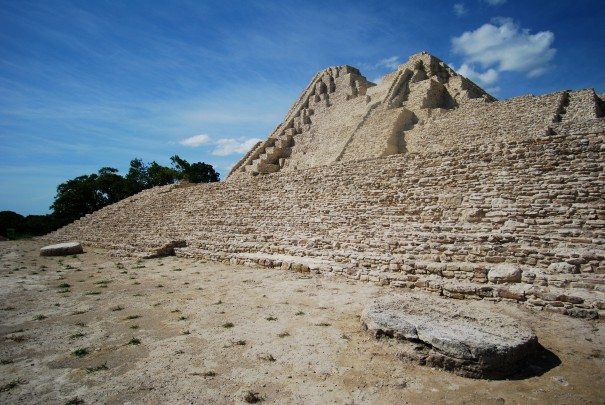Moral-Reforma
Gets its name from the abundance of morales (mulberry trees) found in the Reforma-Provincia ejido.
From a small village it developed into an important point of control for the trade between Petén and the Gulf coast, via the river San Pedro in Tabasco, over a period of 1,700 years. Splendid walled pyramids and filigree inscriptions testify to its alliance with Calakmul and Palenque.
About the site
Moral-Reforma was a Mayan city which thrived on the banks of the San Pedro Mártir River. In its early stages, around 300 BC, navigators used this spot to bypass the river rapids by land. Between 250 and 500 AD, the first phase of construction took place, which consolidated its importance as a center for control of the river. It gained political importance through alliances with great Mayan kingdoms of the era: with Calakmul until 661 AD and Palenque until 690 AD, prompted by control of the region and as an important trade route via the San Pedro Mártir and Usumacinta rivers. With this political and economic support, Moral Reforma achieved its maximum expansion. From 695 AD, Calakmul was politically reoriented towards the Bec River region, while Tikal became weaker as a result of territorial disputes between both kingdoms. As a result, Moral-Reforma became politically independent, ruling a small province in the region of San Pedro Máritr, and enjoyed marginal but sustained development until 1000 AD.
The site is located in the center of the municipality of Balancán in Tabasco. The central part of this Mayan city occupied two low hills which spanned 180 acres, demarcated by the San Pedro Mártir River to the south and the El Sayá River to the north. In this area, more than 76 pre-Hispanic buildings can be seen, distributed around two open plazas in an organized fashion; among these the Conjunto de la Plaza Poniente ("West Plaza Complex") stands out, demarcated by 19 buildings, as does the Conjunto de la Plaza Oriente ("East Plaza Complex"), demarcated by 28 buildings. However, this ancient settlement was larger still: other smaller constructions are found around the central area, dispersed over approximately 7,400 acres extending between the aforementioned river courses.
The architecture of Moral-Reforma is in the Petén style and is similar to that of Calakmul. The size of the pyramidal plinths is much larger in proportion to that of the building. The architecture also features cross-shaped floor plans and a stelae-altar complex. Other characteristic elements are the incorporation of raised sloping walls on one or both sides of the staircases, the paired buildings and the palace-style buildings with indoor courtyards which seem to be late additions to the site.
The construction materials used for the buildings are flint and limestone which have been superficially worked and held together with lime mortar. In the early building stage, the use of of a type of clay block known in the region as “sascab” was identified, which were reused at later stages.
The site is located in the center of the municipality of Balancán in Tabasco. The central part of this Mayan city occupied two low hills which spanned 180 acres, demarcated by the San Pedro Mártir River to the south and the El Sayá River to the north. In this area, more than 76 pre-Hispanic buildings can be seen, distributed around two open plazas in an organized fashion; among these the Conjunto de la Plaza Poniente ("West Plaza Complex") stands out, demarcated by 19 buildings, as does the Conjunto de la Plaza Oriente ("East Plaza Complex"), demarcated by 28 buildings. However, this ancient settlement was larger still: other smaller constructions are found around the central area, dispersed over approximately 7,400 acres extending between the aforementioned river courses.
The architecture of Moral-Reforma is in the Petén style and is similar to that of Calakmul. The size of the pyramidal plinths is much larger in proportion to that of the building. The architecture also features cross-shaped floor plans and a stelae-altar complex. Other characteristic elements are the incorporation of raised sloping walls on one or both sides of the staircases, the paired buildings and the palace-style buildings with indoor courtyards which seem to be late additions to the site.
The construction materials used for the buildings are flint and limestone which have been superficially worked and held together with lime mortar. In the early building stage, the use of of a type of clay block known in the region as “sascab” was identified, which were reused at later stages.
Map
An expert point of view

Francisco Apolinar Cuevas Reyes
Centro INAH Tabasco
Practical information
Monday to Sunday from 08:00 to 17:00 hrs.
Free entry
Se localiza en la porción central del municipio de Balancán, Tabasco.
Services
-
+52 (993) 352 1022, +52 (993) 352 1030
-
This email address is being protected from spambots. You need JavaScript enabled to view it.
Directory
Coordinadora de las Zonas Arqueológicas de la región de Los Ríos, Tabasco
Priscilia Jannet Lagunes Celis
This email address is being protected from spambots. You need JavaScript enabled to view it.
+52 (993) 352 1033 y 352 1022

